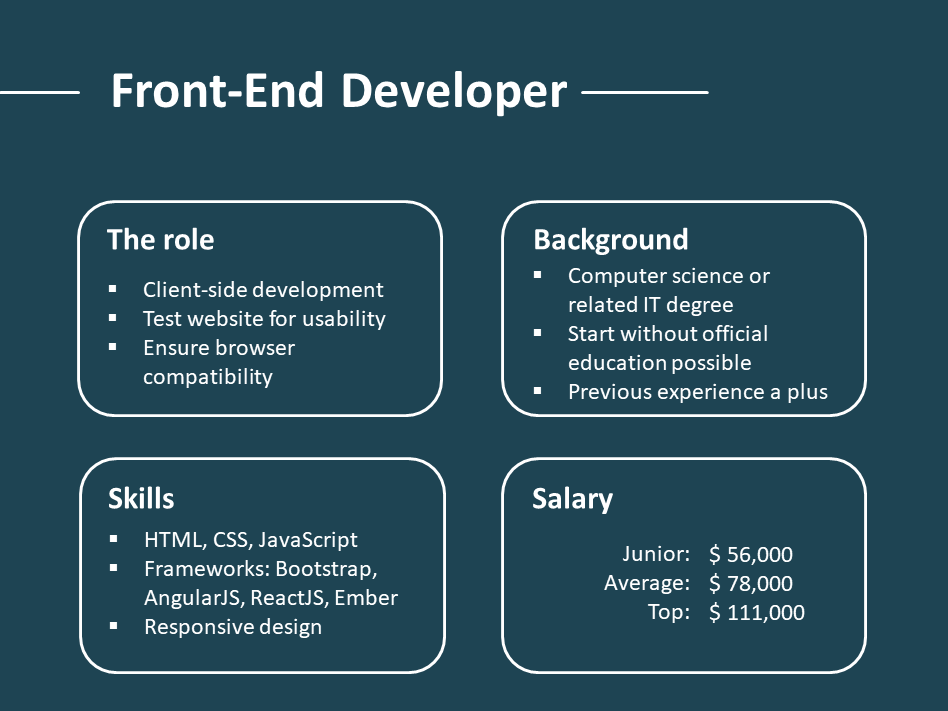Discover Australia's Finest
Explore the latest news, insights, and stories from down under.
Behind the Curtain of Back-End Development
Unearth the secrets of back-end development! Dive into code, servers, and the magic that powers your favorite websites.
The Fundamentals of Server-Side Programming: What Every Developer Should Know
Server-side programming is a crucial aspect of web development that allows developers to create dynamic and interactive web applications. Unlike client-side programming, which runs in the user's browser, server-side code executes on the web server. This enables developers to handle user requests, manage databases, and serve tailored content based on user interactions. Understanding the fundamentals of server-side programming is essential for building robust applications, as it involves various languages and frameworks such as PHP, Python, Ruby, and Node.js.
One of the key principles of server-side programming is request handling. When a user interacts with a web application, their actions trigger requests that the server must process. This involves understanding how to effectively manage incoming requests and generating appropriate responses. Additionally, developers must be familiar with database integration, which allows applications to store and retrieve data efficiently. Whether you're creating a simple blog or a complex e-commerce platform, mastering these fundamentals will equip you to design scalable and maintainable server-side solutions.

Decoding APIs: How They Work and Why They're Essential in Back-End Development
APIs, or Application Programming Interfaces, serve as the vital bridge between different software systems, enabling them to communicate seamlessly. They define the methods and data formats that applications use to request and exchange information. In the realm of back-end development, APIs play a crucial role in allowing developers to integrate various functionalities and services without having to write extensive code from scratch. For instance, through the use of RESTful APIs, developers can easily access and manipulate data stored on remote servers, making applications more dynamic and responsive. The structure of an API typically includes endpoints, HTTP methods, and standardized formats like JSON or XML, ensuring that data is exchanged in a consistent manner.
Understanding how APIs work is essential for any back-end developer looking to create robust and efficient systems. A well-designed API can simplify processes and enhance the overall user experience by providing critical functionalities such as authentication, data retrieval, and data manipulation. Additionally, APIs promote scalability and flexibility, allowing applications to evolve and incorporate new features without major overhauls. As businesses increasingly rely on microservices architecture and cloud-based solutions, the importance of APIs cannot be overstated. They are not just a technical requirement; they are a fundamental component that enables innovation and collaboration in the software development landscape.
Common Back-End Development Pitfalls: How to Avoid Them
Back-end development is a critical component of web application architecture, yet many developers encounter common pitfalls that can compromise functionality and performance. One significant error is overlooking code efficiency, which can lead to slow application response times. It is essential to analyze your code for performance bottlenecks regularly and utilize efficient algorithms. Additionally, not implementing proper error handling can result in a poor user experience. Make sure to include comprehensive logging and user-friendly error messages to help diagnose issues quickly.
Another frequent mistake revolves around neglecting security practices. Failing to validate user inputs can expose your application to various vulnerabilities, such as SQL injection and cross-site scripting. To avoid these risks, always sanitize user data and utilize frameworks that offer built-in security features. It's also crucial to keep dependencies up to date and to conduct regular security audits to safeguard your application against potential threats.